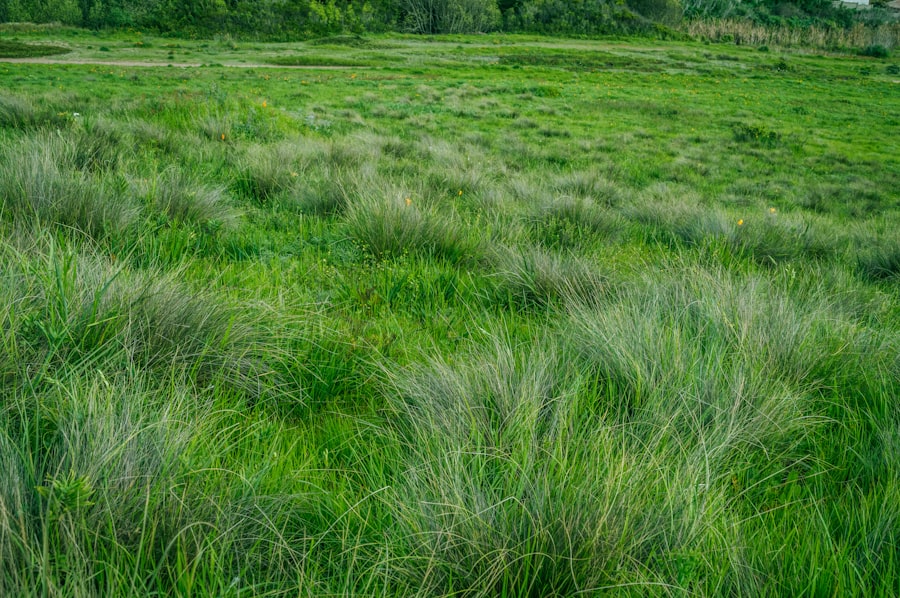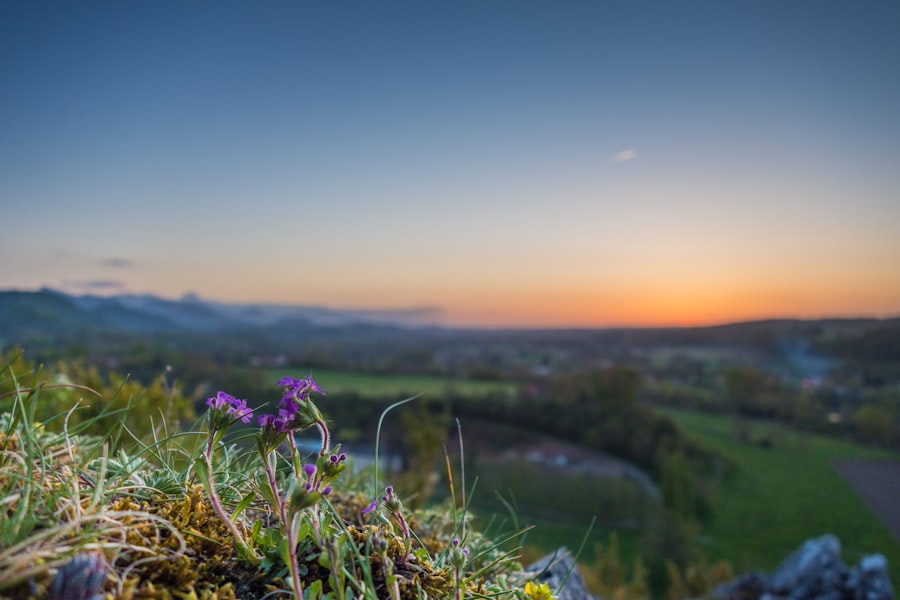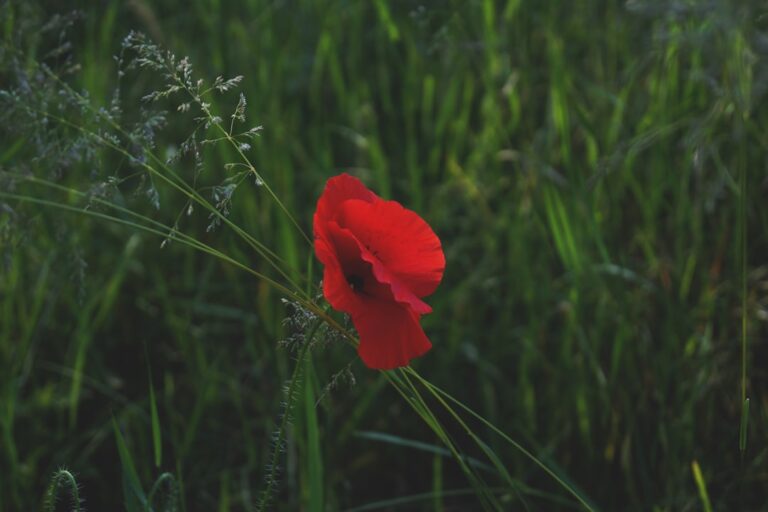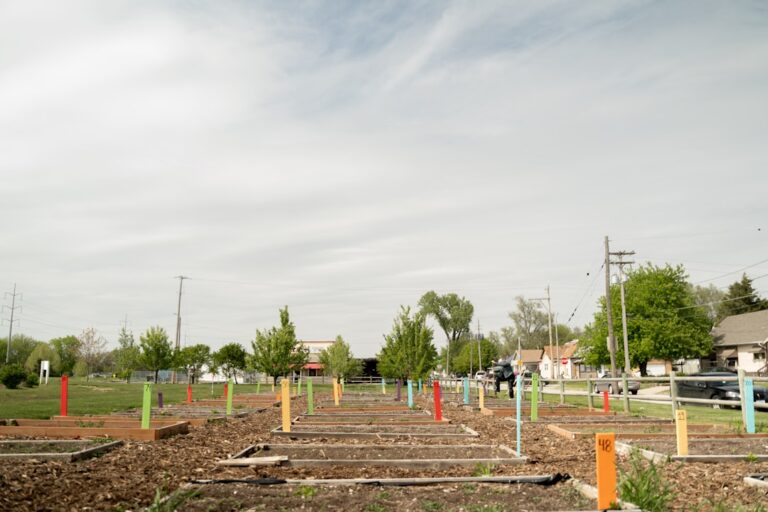The grass block, a quintessential element of the Minecraft universe, has a rich history that reflects the evolution of the game itself. When Minecraft was first released to the public in 2009, it featured a rudimentary landscape primarily composed of dirt and stone. The introduction of the grass block came shortly thereafter, marking a significant milestone in the game’s development.
This block not only added aesthetic value to the environment but also introduced players to the concept of biomes, which would later become a defining feature of Minecraft’s expansive world. The grass block served as a foundation for various ecosystems, allowing for the growth of flora and fauna, which enhanced the immersive experience of the game. As Minecraft evolved through numerous updates, the grass block underwent several changes that improved its functionality and interaction with other game elements.
The addition of biomes in the Beta version allowed for different types of grass blocks to emerge, each with unique characteristics depending on their environment. For instance, the grass block found in a plains biome differs from that in a snowy tundra, showcasing the game’s commitment to realism and diversity. Over time, players began to appreciate not just the visual appeal of grass blocks but also their role in gameplay mechanics, such as farming and animal husbandry.
This evolution reflects Minecraft’s broader narrative of growth and adaptation, mirroring the way players themselves engage with and shape their virtual worlds.
Key Takeaways
- Grass blocks have been a fundamental part of Minecraft since its early days, serving as the foundation for the game’s natural landscapes.
- In Minecraft, grass blocks play a crucial role in providing a natural and vibrant environment for players to explore and build in.
- Grass blocks spread and reproduce through a process called “ticking,” which allows them to gradually cover and transform the surrounding terrain.
- Grass blocks are essential for farming in Minecraft, as they provide the necessary environment for crops to grow and thrive.
- The presence of grass blocks in Minecraft has a significant environmental impact, contributing to the overall aesthetic and atmosphere of the game world.
The Role of the Grass Block in Minecraft
The Foundation of a Thriving Environment
Grass blocks are essential for creating a vibrant landscape where players can cultivate crops, raise animals, and explore diverse biomes. The presence of grass blocks indicates a healthy environment, as they support various forms of life, including trees, flowers, and grasses.
A Canvas for Creativity
The grass block acts as a canvas upon which players can paint their visions, whether that be sprawling farms or intricate gardens. Moreover, grass blocks play a pivotal role in gameplay mechanics related to farming and resource gathering.
Enabling Survival and Progress
They are the only blocks that allow certain plants to grow, such as wheat, carrots, and potatoes. When tilled with a hoe, grass blocks transform into farmland blocks, enabling players to cultivate crops that are essential for survival in the game. Additionally, grass blocks are vital for spawning passive mobs like cows, sheep, and pigs, which provide essential resources such as meat and wool. This interdependence between grass blocks and other game elements underscores their importance in creating a sustainable environment for players to thrive.
How Grass Blocks Spread and Reproduce

The mechanics behind how grass blocks spread and reproduce are fascinating and add depth to gameplay strategies. Grass blocks have the unique ability to spread to adjacent dirt blocks under specific conditions. When a grass block is exposed to light levels of 9 or higher and is adjacent to dirt blocks, it can convert those dirt blocks into grass blocks over time.
This natural propagation mimics real-world ecological processes where vegetation spreads through various means, such as seed dispersal or root systems. Players can leverage this mechanic to expand their grassy areas without needing to manually place each block. The rate at which grass spreads is influenced by several factors, including light levels and proximity to other grass blocks.
If players wish to create expansive green areas quickly, they can strategically place grass blocks near dirt blocks in well-lit environments. This method not only enhances the aesthetic appeal of their builds but also contributes to a more vibrant ecosystem within their Minecraft world. Understanding these mechanics allows players to manipulate their environments effectively, creating lush landscapes that teem with life.
The Importance of Grass Blocks for Farming
| Grass Blocks | Importance for Farming |
|---|---|
| 1. | Provide essential nutrients to livestock |
| 2. | Help prevent soil erosion |
| 3. | Support biodiversity by providing habitat for insects and small animals |
| 4. | Contribute to the overall health of the ecosystem |
| 5. | Can be used for grazing and forage for animals |
Grass blocks are foundational to successful farming in Minecraft, serving as the primary substrate for crop cultivation. When players till grass blocks using a hoe, they transform them into farmland blocks, which are essential for growing various crops. This process is crucial for survival gameplay since food sources are necessary for sustaining health and hunger levels.
Crops such as wheat, carrots, and potatoes thrive on tilled grass blocks, providing players with essential nutrition and resources for crafting items like bread or potions. In addition to crop cultivation, grass blocks also support animal husbandry. Passive mobs like sheep and cows spawn on grass blocks, allowing players to raise livestock for wool and meat.
The presence of grass blocks is vital for maintaining these animals’ health; they require access to grassy areas to thrive. Players can create farms that not only yield crops but also provide a steady supply of animal products by ensuring ample grass coverage in their farming areas. This symbiotic relationship between grass blocks and farming practices highlights their significance in establishing a self-sustaining ecosystem within the game.
The Environmental Impact of Grass Blocks
The environmental impact of grass blocks extends beyond mere aesthetics; they play a crucial role in maintaining ecological balance within Minecraft’s diverse biomes. Grass blocks contribute to soil health by preventing erosion and promoting biodiversity. In real-world ecosystems, healthy soil is essential for supporting plant life and maintaining water quality.
Similarly, in Minecraft, grass blocks help create stable environments where various plants can flourish and animals can thrive. This balance is vital for players who wish to create sustainable worlds that mimic real-life ecological principles. Furthermore, the presence of grass blocks influences gameplay dynamics by affecting mob spawning rates and plant growth.
For instance, certain biomes with abundant grass blocks will naturally attract more passive mobs, providing players with ample resources for farming and crafting. Conversely, areas devoid of grass may lead to reduced biodiversity and fewer resources available for players. Understanding this environmental impact allows players to make informed decisions about land management within their Minecraft worlds, promoting sustainability while enhancing their gameplay experience.
Unique Uses for Grass Blocks in Minecraft

Architectural Vision
One notable application is in building designs where players utilize grass blocks as part of their architectural vision. For example, players can create green roofs or living walls by incorporating grass blocks into their structures, blending nature with human-made environments. This not only adds visual interest but also reinforces the theme of sustainability within Minecraft’s building mechanics.
Redstone Contraptions
Grass blocks can be used strategically in redstone contraptions and mechanisms. Players often employ them as part of complex systems involving pistons or other redstone components.
Hidden Doors and Secret Passages
For instance, when combined with other materials like dirt or sand, grass blocks can be used to create hidden doors or secret passages that add an element of surprise to builds. These creative applications showcase the versatility of grass blocks beyond their traditional roles, encouraging players to experiment with different designs and functionalities.
Tips for Finding and Collecting Grass Blocks
Finding and collecting grass blocks in Minecraft can be an enjoyable aspect of gameplay that encourages exploration and resource management. Grass blocks are commonly found in various biomes such as plains, forests, and savannas, making them relatively easy to locate for most players. However, understanding how to efficiently collect these blocks can enhance gameplay experience significantly.
One effective method is to equip a shovel with the Silk Touch enchantment; this allows players to harvest grass blocks without converting them into dirt. When exploring different biomes in search of grass blocks, players should pay attention to environmental cues that indicate lush areas rich in vegetation. For instance, regions with abundant flowers or trees are likely to have numerous grass blocks nearby.
Additionally, players can create pathways or markers leading back to their base from these locations to facilitate easier collection trips in the future. By combining exploration with strategic planning, players can amass significant quantities of grass blocks for their building projects or landscaping endeavors.
How to Create and Maintain a Lush Grass Block Landscape
Creating and maintaining a lush landscape filled with vibrant grass blocks requires careful planning and attention to detail within Minecraft’s sandbox environment. To begin this process, players should select an area that offers ample sunlight and space for expansion; this will promote healthy growth of both grass and other plants.
Players should monitor light levels and ensure that no obstructions prevent sunlight from reaching the grass blocks; this will facilitate continued growth and reproduction. Additionally, incorporating various plants such as flowers or shrubs can enhance biodiversity within the landscape while adding visual appeal.
Players may also consider implementing irrigation systems using water sources nearby; this will help sustain plant life during dry periods while promoting overall health within their grassy environments. By understanding these principles surrounding grass block management in Minecraft—ranging from collection techniques to maintenance strategies—players can cultivate stunning landscapes that reflect their creativity while embracing the game’s core mechanics.
If you’re interested in learning more about the benefits of grass blocks, you may want to check out this article on foods high in protein. Grass blocks are known for their nutritional value and can be a great addition to a healthy diet. This article provides information on various foods that are rich in protein, which is essential for muscle growth and overall health. Incorporating grass blocks into your meals can help you meet your protein needs and support your fitness goals.
FAQs
What is a grass block?
A grass block is a type of block in the game Minecraft that represents the most basic and abundant type of terrain in the game. It is the block that covers the surface of the Overworld.
How is a grass block obtained?
Grass blocks can be obtained by using a tool with the Silk Touch enchantment, or by using a shovel to collect the block directly. They can also be obtained by killing an Enderman that is holding a grass block.
What can be done with a grass block?
In Minecraft, grass blocks can be used to create grassy areas, grow crops, and provide a natural look to the environment. They can also be used as a building material for creating natural-looking structures.
Can grass blocks spread?
Yes, grass blocks can spread to adjacent dirt blocks if certain conditions are met. This process is known as grass spreading and is a natural part of the game’s terrain generation mechanics.
Are there different variations of grass blocks?
In Minecraft, there are different variations of grass blocks that correspond to different biomes. Each biome has its own unique grass block texture and color, reflecting the diversity of the game’s environments.
























+ There are no comments
Add yours